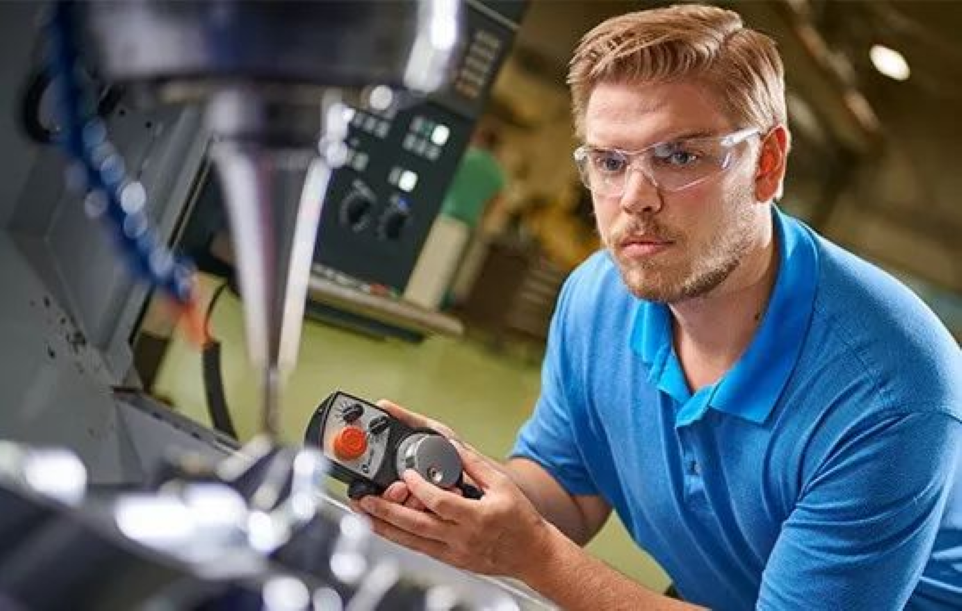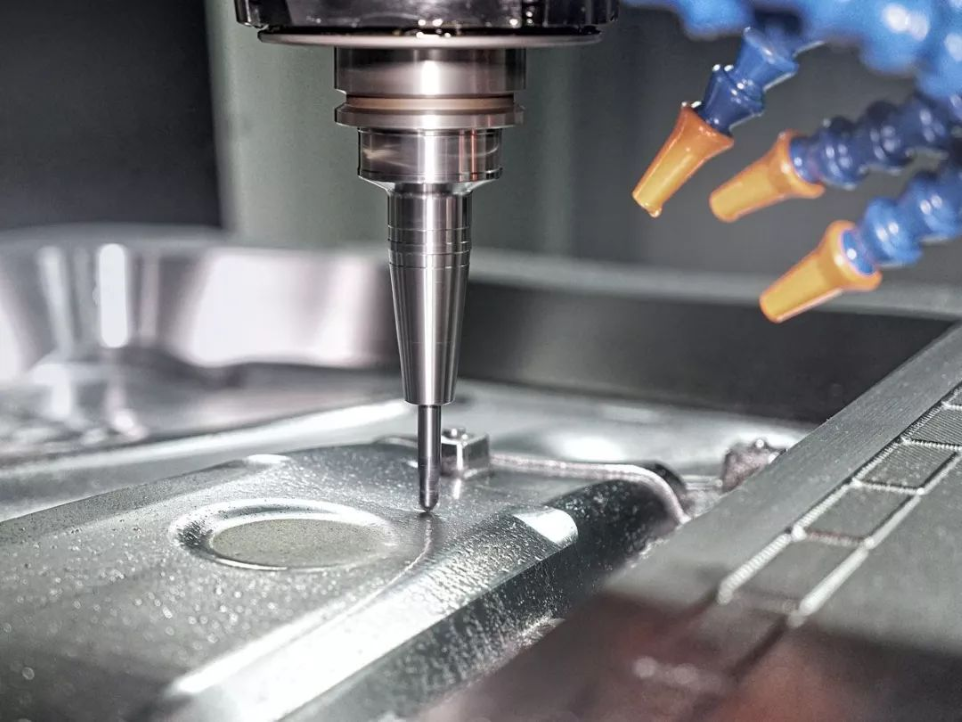01 Start-up preparation
Every time the machine tool is turned on or reset by emergency stop, it first returns to the reference zero position of the machine tool (ie, return to zero), so that the machine tool has a reference position for its subsequent operations.(OEM ALUMINUM BOX)
02 Clamping the workpiece
Before the workpiece is clamped, all surfaces should be cleaned, and there should be no oil stains, iron filings and dust, and the burrs on the surface of the workpiece should be removed with a file (or oil stone).
The high-speed rail used for clamping must be ground by a grinder to make it smooth and flat. The code iron and nut must be strong and can clamp the workpiece reliably. For some small workpieces that are difficult to clamp, they can be directly clamped on the tiger; the machine tool table should be clean and free of iron filings, dust and oil; At the four corners of the workpiece, it is necessary to add equal-height horns in the middle for workpieces with large spans.
According to the size of the drawing, use a drawing ruler to check whether the length, width and height of the workpiece are qualified.
When clamping the workpiece, according to the clamping and placement method of the programming work instruction, it is necessary to consider avoiding the processing part and the situation that the cutter head may hit the fixture during processing.

After the workpiece is placed on the bolster, the reference surface of the workpiece should be pulled according to the requirements of the drawing, and the verticality of the workpiece that has been ground on all six sides should be checked.
After the workpiece is pulled, the nut must be tightened to prevent the workpiece from shifting during processing due to weak clamping; pull the watch again to make sure that the error is within tolerance after clamping.
03 Number of workpiece touches
For the clamped workpiece, the touch head can be used to determine the reference zero position for processing, and the touch head can be of photoelectric type and mechanical type. There are two kinds of methods: middle touch number and unilateral touch number. The steps of middle touch number are as follows:
Photoelectric static, mechanical speed 450~600rpm. Manually move the X-axis of the worktable in the middle of the touch, so that the touch head touches one side of the workpiece. When the touch head just touches the workpiece and the red light is on, set the relative coordinate value of this point to zero; then move the work manually. The X-axis of the table makes the colliding head touch the other side of the workpiece. When the colliding head just touches the workpiece, record the relative coordinates at this time.
According to its relative value minus the diameter of the collision head (that is, the length of the workpiece), check whether the length of the workpiece meets the requirements of the drawing.
Divide this relative coordinate number by 2, the obtained value is the middle value of the workpiece X axis, then move the worktable to the middle value on the X axis, and set the relative coordinate value of this point on the X axis to zero, this point is the workpiece The zero position on the X axis.
Carefully record the mechanical coordinate value of the zero position on the X axis of the workpiece in one of G54~G59, and let the machine tool determine the zero position on the X axis of the workpiece. Double check the correctness of the data again. The steps of workpiece Y-axis zero setting are the same as the X-axis operations.
04 Get all your knives ready
According to the tool data in the programming work instruction, replace the tool to be processed, let the tool touch the height measuring device placed on the reference plane, and set the relative coordinate value of this point to zero when the red light of the measuring device is on.
Move the tool to a safe place, manually move the tool down 50mm, and set the relative coordinate value of this point to zero again, which is the zero position of the Z axis.
Record the mechanical coordinate Z value of this point in one of G54~G59. This completes the zero setting of the workpiece X, Y, and Z axes. Double check the correctness of the data again.
The unilateral touch is also to touch one side of the X and Y axes of the workpiece according to the above method, and offset the relative coordinate value of the X and Y axes of this point. The radius of the touch head is the zero position of the X and Y axes, and finally put a point. The mechanical coordinates of X and Y axes are marked in one of G54~G59. Double check the correctness of the data again.
Check the correctness of the zero point, move the X and Y axes to the side overhang of the workpiece, and visually check the correctness of the zero point according to the size of the workpiece.
Copy the program files to the computer according to the file path of the programming work instruction.(OEM CHASSIS METAL ENCLOSURE)

05 Setting of processing parameters
Spindle speed setting during machining: N=1000×V/(3.14×D)
N: Spindle speed (rpm/min) V: Cutting speed (m/min) D: Tool diameter (mm) Feedrate setting for machining: F=N×M×FnF: Feedrate (mm/min) M : The number of cutting edges of the tool Fn: The cutting amount of the tool (mm/revolution) Setting of cutting amount per edge: Fn=Z×FzZ: The number of cutting edges of the tool Fz: The cutting amount of each cutting edge of the tool (mm/revolution)
06 Start processing
At the beginning of each program, it must be carefully checked whether the tool used is the one specified in the programming instruction. When starting processing, the feed speed should be adjusted to the minimum, executed in a single block, and must be concentrated when positioning quickly, dropping the tool, and feeding the tool. If there is a problem with the stop button, stop immediately. Then slowly increase the feed rate to a suitable level, and at the same time add coolant or cold air to the tool and workpiece.
When starting rough machining, it should not be too far away from the control panel. If there is an abnormal phenomenon, it should be stopped and checked in time.
Pull the watch again after opening to make sure that the workpiece is not loose. If there is, it must be re-calibrated and touched.
In the process of processing, the processing parameters are continuously optimized to achieve the best processing effect.
Because this process is a key process, after the workpiece is processed, it should be measured whether its main dimensions are consistent with the requirements of the drawing. If there is any problem, immediately notify the team leader or programmer to check and solve it, and it can be removed after passing the self-inspection. It must be sent to the inspector for special inspection.
Processing type:
Hole processing: Before drilling holes on the machining center, you must first use the center drill to locate, then use a drill 0.5~2mm smaller than the size of the drawing to drill, and finally use a suitable drill for finishing.
Reaming processing: When reaming the workpiece, it is also necessary to use the center drill to locate it first, then use a drill bit 0.5~0.3mm smaller than the size of the drawing to drill the hole, and finally use the reamer to ream the hole. When reaming, pay attention to controlling the spindle speed at Within 70~180rpm/min.
Boring processing: When boring the workpiece, first use the center drill to locate it, then use a drill 1~2mm smaller than the size of the drawing to drill, and then use a rough boring tool (or milling cutter) to process it until only 0.3mm on one side is left. Left and right machining allowances, and finally use a pre-adjusted fine boring tool for fine boring, and the last fine boring allowance should not be less than 0.1mm.

Direct numerical control (DNC) operation: Before DNC numerical control machining, the workpiece should be clamped, the zero position should be set, and the parameters should be set. Open the processing program to be transmitted in the computer to check, then let the computer enter the DNC state, and input the file name of the correct processing program. Press the TAPE key and the program start key on the machine tool, then the machine tool controller will flash the words LSK. Press Enter on the computer to perform DNC data transfer processing.
07 Self-check content and scope
Before processing, the processor must clearly see the content of the process card, clearly know the part to be processed, the shape, the dimensions of the drawing, and the processing content of the next process.
Before the workpiece is clamped, it is necessary to measure whether the blank size meets the requirements of the drawing. When the workpiece is clamped, it must be carefully checked whether its placement is consistent with the programming operation instruction.
Self-check should be carried out in time after rough machining is completed, so that the data with errors can be adjusted in time. The main content of self-inspection is the position and size of the processing part. Such as: whether the workpiece is loose; whether the workpiece is correctly divided; whether the size of the processing part to the reference edge (reference point) meets the requirements of the drawing; the position size of the processing parts. Measure the roughed shape ruler (except arcs) after checking the position dimensions.
Finishing is performed after the roughing self-check. After finishing, workers should conduct self-inspection on the shape and size of the processing part: check the basic length and width of the processing part on the vertical plane; measure the base point size marked on the drawing for the processing part on the inclined plane.
Workers complete the self-inspection of the workpiece and confirm that it conforms to the drawings and process requirements before removing the workpiece and sending it to the inspector for special inspection.